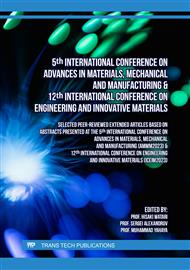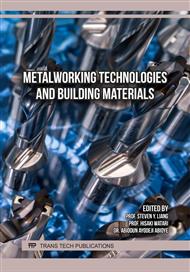p.3
p.9
p.15
p.27
p.35
p.43
p.51
p.59
Investigation of the Behavior of Surface Roughness Suppression Orientation on the Inner Surface of Metal Microtubes Using Crystal Plasticity Finite Element Method
Abstract:
The objective of this study was to clarify whether the surface roughness suppression orientation actually suppresses surface roughness by using the crystal plasticity finite element method (CPFEM), which is based on the relationship between the surface roughness suppression orientation and deformation in the inner surface direction that we have clarified in the past. In order to simplify the calculation and reduce the computational cost, a model was created by embedding cylinders in a rectangular body, which was then divided into 1/4 for the analysis. A dislocation density increase model that takes work hardening into account was applied to the model, and values obtained from tensile tests were used for material constants. The model was divided into 2130 elements. The simulation results show that the surface roughness suppression orientation is actually more difficult to deform than its surroundings.
Info:
Periodical:
Pages:
3-7
Citation:
Online since:
March 2024
Price:
Сopyright:
© 2024 Trans Tech Publications Ltd. All Rights Reserved
Share:
Citation:



